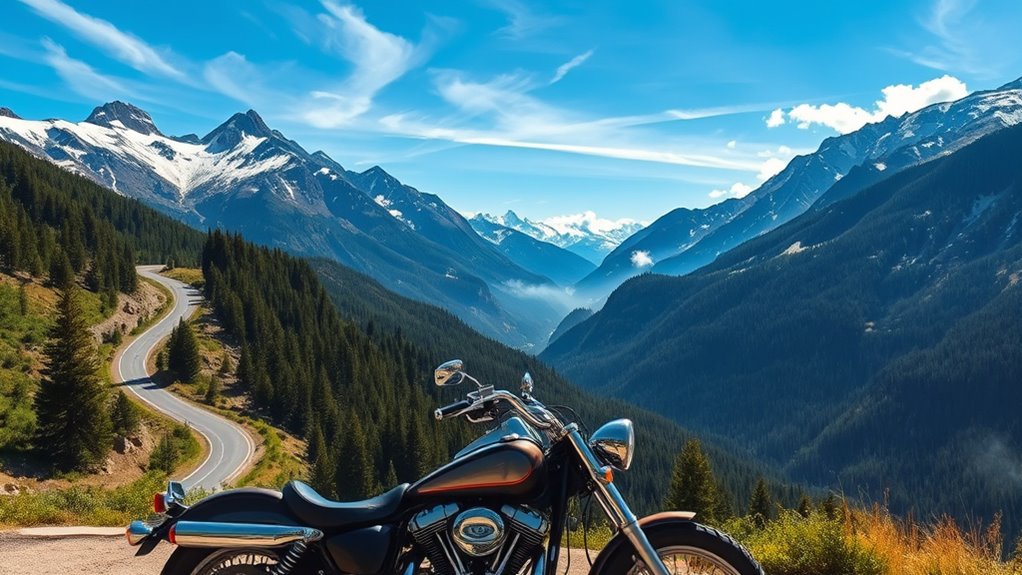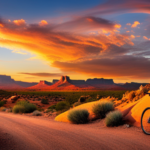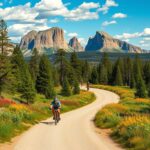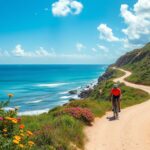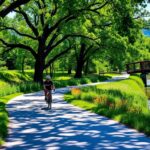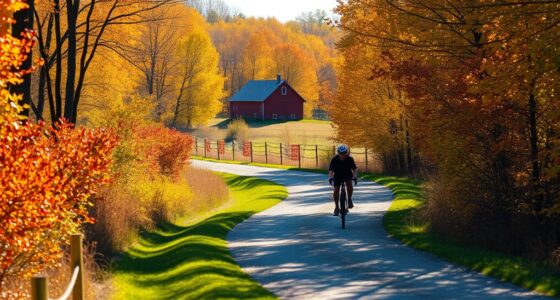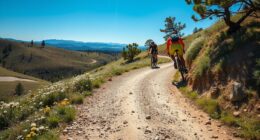Tackling Colorado’s mountain passes offers you an epic adventure filled with stunning views and rich history. Experience the Historic Alpine Tunnel, conquer the high-altitude Cottonwood Pass, and drive the breathtaking Trail Ridge Road. Each pass presents unique challenges and unforgettable landscapes that will leave you in awe. From backcountry skiing at Berthoud Pass to hiking near Independence Pass, there’s something for everyone. Stick around, and you’ll discover more about these incredible scenic routes!
Key Takeaways
- Explore the Historic Alpine Tunnel for a glimpse into Colorado’s railroad history and scenic hiking along the original railroad bed.
- Experience the Scenic Berthoud Pass, perfect for backcountry skiing and hiking trails with stunning views and minimal traffic.
- Conquer the High Altitude Cottonwood Pass, the highest paved crossing, ideal for biking and hiking with breathtaking panoramic vistas.
- Discover the Independence Pass Adventure, featuring spectacular views and access to hiking and rock climbing opportunities at The Grottos.
- Drive the breathtaking Trail Ridge Road, the highest continuous paved road, showcasing diverse ecosystems and wildlife spotting opportunities.
Discover the Historic Alpine Tunnel
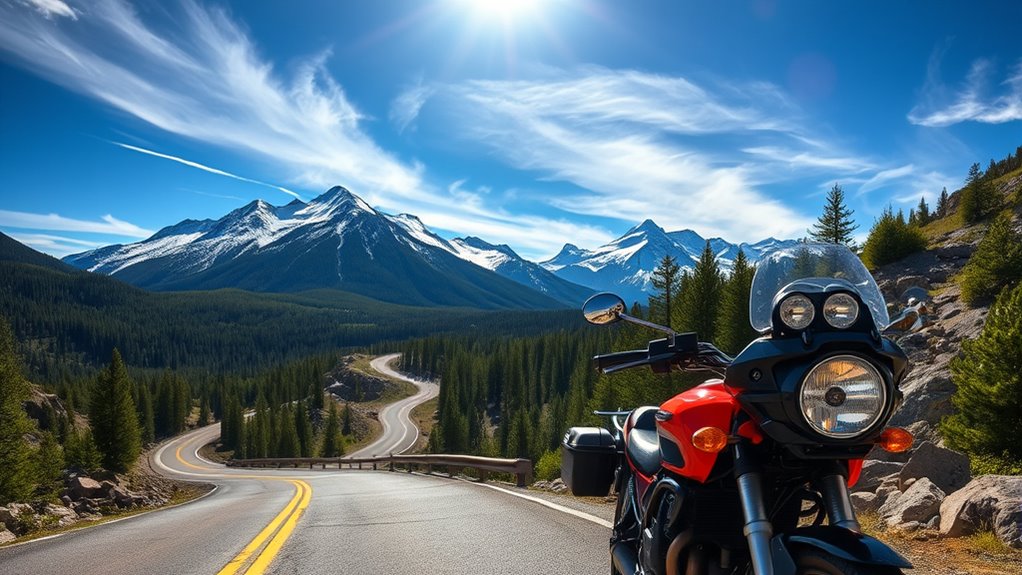
As you explore Colorado’s mountain passes, don’t miss the historic Alpine Tunnel, located near Pitkin at an impressive elevation of 11,523 feet.
This remarkable 1,772-foot tunnel was the first to cross the Continental Divide in North America, constructed by the Denver, South Park & Pacific Railroad. Its creation faced numerous challenges, from unstable ground conditions to harsh weather, ultimately taking 18 months to complete.
Abandoned in 1910 due to financial issues and competition, the tunnel now stands sealed but serves as a reminder of its rich history.
The Alpine Tunnel, sealed since 1910, remains a poignant symbol of its storied past amidst Colorado’s rugged landscape.
Hike along the original railroad bed, and take in stunning views while exploring nearby ghost towns like Hancock and Woodstock. Adventure awaits in this historic site!
Experience the Scenic Berthoud Pass
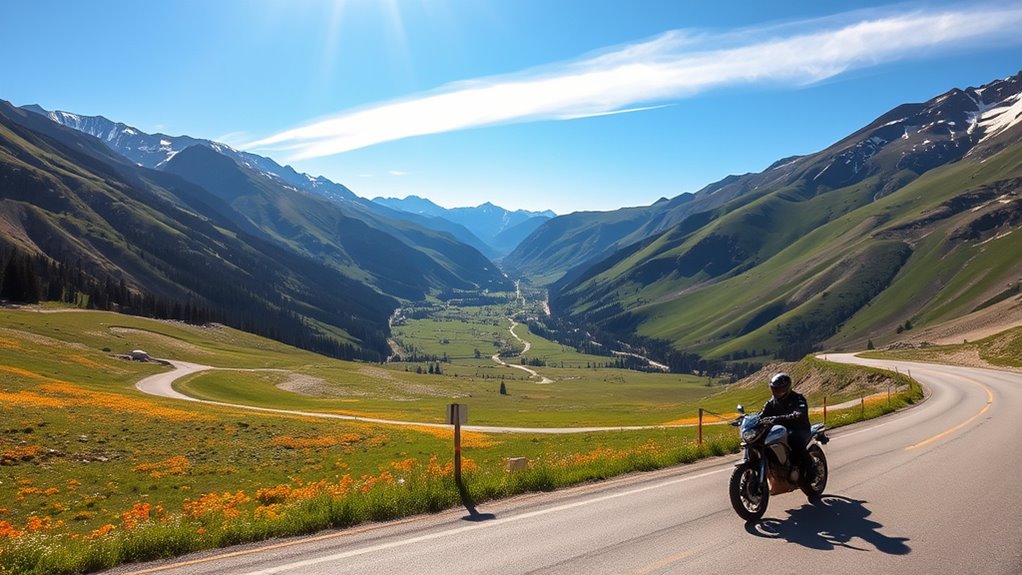
Nestled in the heart of the Rocky Mountains, Berthoud Pass beckons with its breathtaking views and exhilarating outdoor adventures.
At an elevation of 11,307 feet, this scenic drive along U.S. Highway 40 offers minimal traffic congestion, allowing you to soak in the stunning landscape.
Whether you’re hitting the backcountry skiing slopes or exploring the many hiking trails, including the famous Continental Divide Trail, you’ll find endless opportunities for adventure.
In winter, snowshoeing and cross-country skiing on trails like Second Creek Trail attract enthusiasts.
Don’t forget your camera; the photo opportunities are simply unbeatable.
With its rich history and natural beauty, Berthoud Pass promises an unforgettable experience for every outdoor lover. Additionally, the area’s cultural significance as a gathering place mirrors the community bonds found in historical Alaskan farmhouses.
Conquer the High Altitude Cottonwood Pass
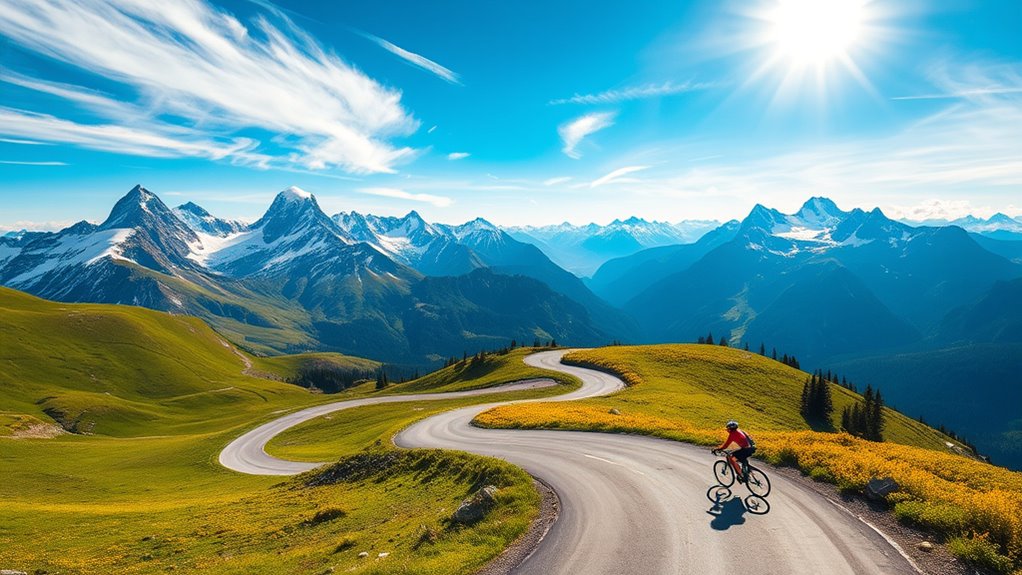
If you’re looking for another unforgettable mountain experience, Cottonwood Pass should be at the top of your list.
Nestled between Chaffee and Gunnison counties, this breathtaking pass rises to an elevation of over 12,100 feet, making it the highest paved crossing of the Continental Divide in the U.S.
Nestled between Chaffee and Gunnison counties, Cottonwood Pass reaches over 12,100 feet, the highest paved crossing of the Continental Divide in the U.S.
To access it, start from Buena Vista along Chaffee County Road 306, which changes to Gunnison County Road 209 near the summit.
You’ll find stunning panoramic views, ideal for hiking and biking.
However, be cautious of steep gradients and tight switchbacks, especially with changing weather.
Remember, the pass closes seasonally, so plan your adventure between June and September for the best experience.
Don’t forget your camera!
Adventure Through Independence Pass
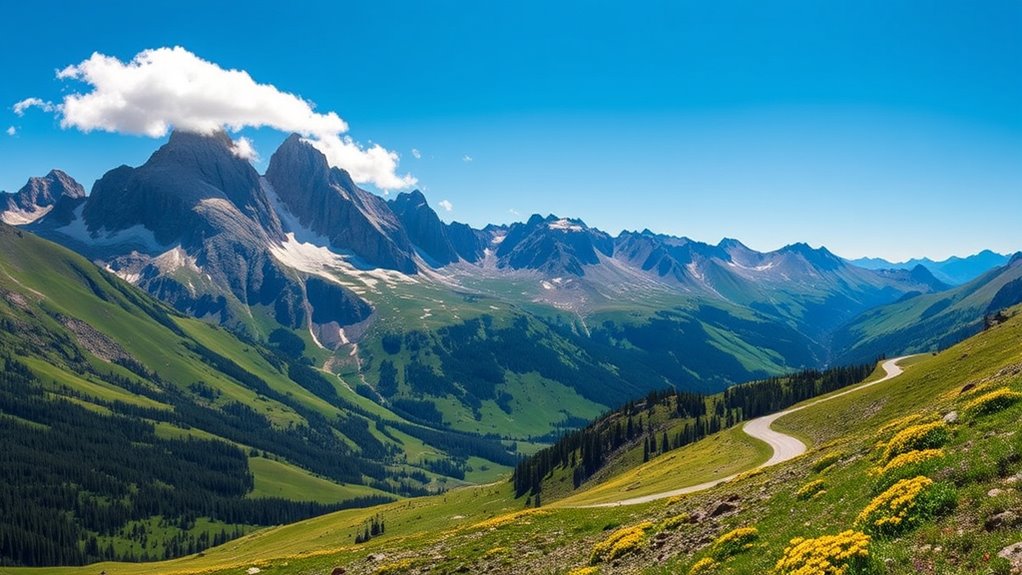
When you set out on an adventure through Independence Pass, you’ll be captivated by its stunning vistas and rich history. At 12,095 feet, it’s one of the highest paved mountain passes in the U.S., located in the Sawatch Range between Twin Lakes and Aspen.
Open seasonally from Memorial Day, this scenic byway not only offers breathtaking views of the Continental Divide but also showcases the ghost town of Independence, a reminder of Colorado’s mining past.
Accessible via paved roads, you can easily explore hiking trails or rock climbing spots like The Grottos. Don’t forget your camera—this place is a photographer’s dream.
Just be prepared for changing weather and take in the beauty that surrounds you!
Drive the Breathtaking Trail Ridge Road
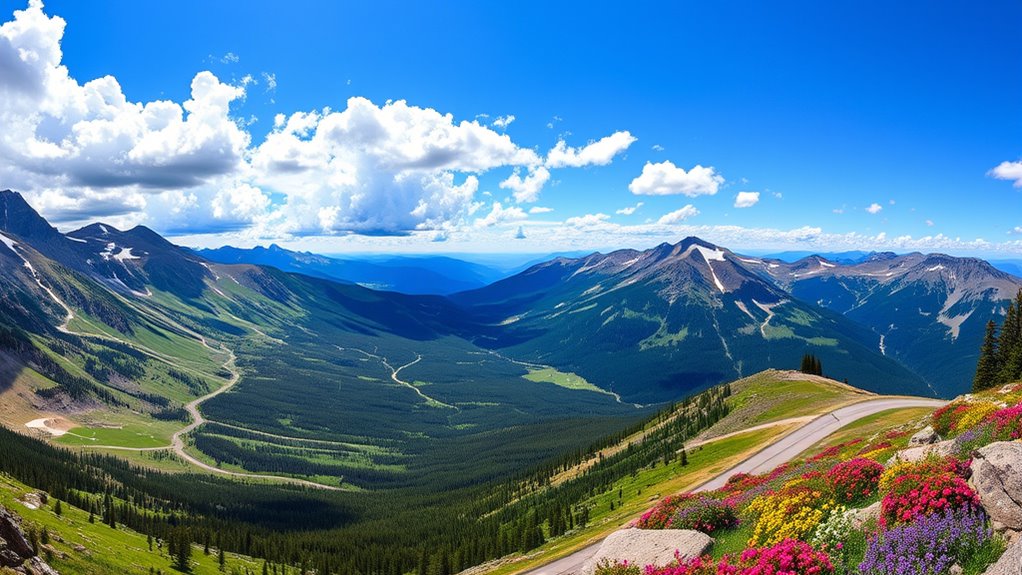
As you embark on the drive along Trail Ridge Road, prepare to be wowed by sweeping views that stretch across Rocky Mountain National Park.
Prepare to be amazed by the stunning vistas as you journey along Trail Ridge Road in Rocky Mountain National Park.
This 48-mile route, reaching an elevation of 12,183 feet, is the highest continuous paved road in the U.S. Designed to replace the narrow Fall River Road, it offers breathtaking scenery and accessibility.
Along the way, you’ll traverse diverse ecosystems, from montane to alpine, and might even spot wildlife like marmots and wild turkeys.
Make sure to stop at popular viewpoints such as Deer Ridge Junction and the Alpine Visitor Center. Don’t forget to explore local seafood restaurants that emphasize sustainable practices and fresh ingredients in the nearby areas after your adventure.
Explore the Colorful Kebler Pass
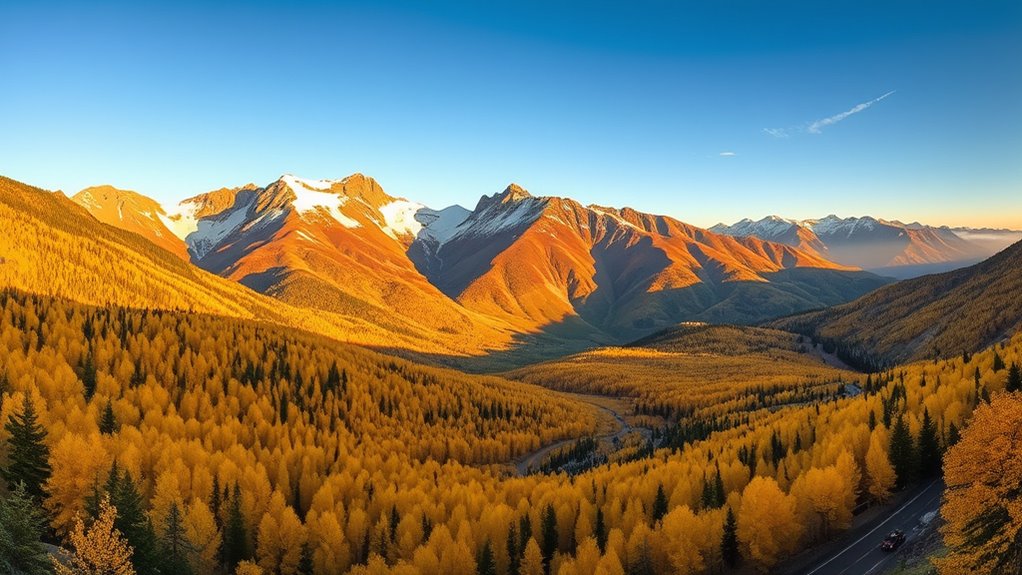
Kebler Pass is a hidden gem in the Gunnison National Forest, offering a stunning drive that connects Crested Butte with Paonia. At an elevation of 10,007 feet, this 30-mile gravel road is perfect for 2-wheel drive vehicles and opens from late May to early November.
As part of the West Elk Loop Scenic and Historic Byway, you’ll encounter breathtaking views, especially during fall when the aspen groves burst with color.
Enjoy hiking on trails like the Three Lakes Trail, or bike along the smooth roads. There are also dispersed camping spots, and if you’re adventurous, try your hand at 4×4 off-highway driving.
Don’t miss the chance to witness local wildlife and picturesque lakes along the way!
Journey Along the Historical Boreas Pass
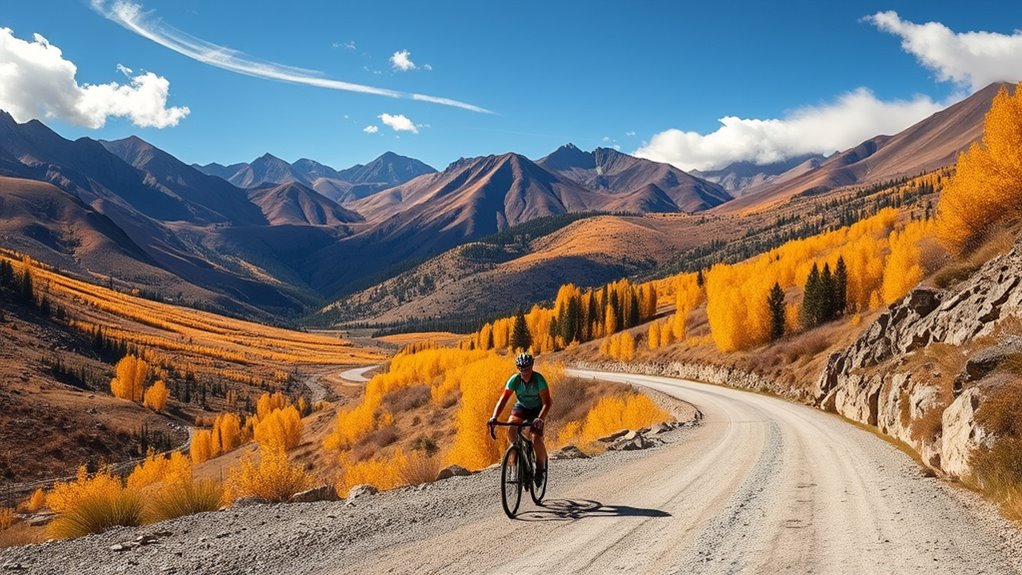
Nestled on the Continental Divide, Boreas Pass invites you to experience its rich history and stunning scenery at an elevation of 11,481 feet.
Once a vital route for prospectors during the Colorado Gold Rush, this pass showcases the remnants of the Denver, South Park and Pacific Railroad, established in 1882.
As you traverse the gravel Road 33, enjoy breathtaking views of aspen trees, Mount Silverheels, and the Tenmile Range.
The pass, now popular for hiking and biking, offers a glimpse into the past with the ghost town of Boreas and the historic railroad station site.
With access during good weather, it’s an unforgettable journey through time and nature, perfect for your next adventure.
Navigate the Rugged Coal Bank Pass
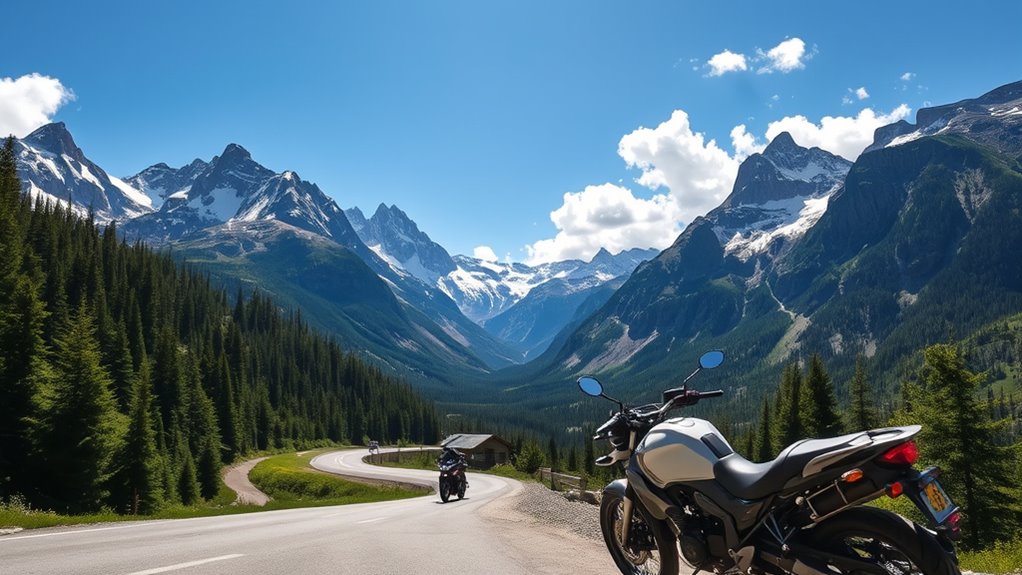
While you navigate the rugged terrain of Coal Bank Pass, you’ll encounter breathtaking views and a rich mining history that define this scenic route.
Experience breathtaking views and a fascinating mining history as you traverse the rugged terrain of Coal Bank Pass.
Sitting at an elevation of 10,640 feet, this pass offers a paved road along U.S. Highway 550, making it accessible for most vehicles, weather permitting.
As you descend, be prepared for steep gradients averaging 6.5%, with sharp turns that require your full attention.
Take advantage of the nearby Engineer Mountain Trailhead for hiking or mountain biking, and enjoy the sweeping vistas of the San Juan Mountains.
Remember to stay alert during winter months, as heavy snowfall can lead to closures and traction laws.
Your journey through Coal Bank Pass is sure to be unforgettable!
Challenge Yourself at Slumgullion Pass

As you embark on your adventure through Slumgullion Pass, prepare to be captivated by its stunning vistas and unique geological features.
At an elevation of 11,530 feet, this scenic route along State Highway 149 offers breathtaking views of the San Juan Mountains and the impressive Slumgullion Earthflow, a National Natural Landmark.
You’ll find the steepest paved road grade in Colorado here, challenging your skills as you navigate its well-maintained, paved two-lane road.
Keep an eye out for elk, deer, and even bighorn sheep as you ride.
Nearby, Lake San Cristobal invites you to explore its fishing and camping opportunities.
This experience isn’t just a ride; it’s an unforgettable journey through Colorado’s rich history and natural beauty.
Frequently Asked Questions
What Is the Best Time to Visit Colorado’s Mountain Passes?
The best time to visit Colorado’s mountain passes is during late summer and early fall, specifically from late August to September.
You’ll enjoy mild weather, fewer crowds, and stunning fall foliage. Most passes are open, allowing you to explore freely.
While spring offers beautiful wildflowers, it can be tricky due to snow and avalanche risks.
If you prefer a quieter experience, fall’s cooler temperatures and picturesque landscapes make it a perfect choice.
Are There Any Vehicle Restrictions for Mountain Passes?
Yes, there are vehicle restrictions for mountain passes.
During severe winter conditions, you’ll need snow tires, M+S tires, or four-wheel/all-wheel drive under traction laws.
When conditions worsen, chains may be required.
Be aware that trailers can face restrictions on routes like I-70 during hazardous weather.
It’s crucial to check for seasonal restrictions and ensure your vehicle meets safety regulations before heading out to enjoy those mountain roads.
How Can I Prepare for High-Altitude Driving?
To prepare for high-altitude driving, start by inspecting your vehicle. Check your brakes, tire pressure, and fluid levels to ensure everything’s in top shape.
Familiarize yourself with how altitude affects engine performance and fuel efficiency. Use lower gears on steep inclines and maintain a steady speed.
Stay hydrated to combat altitude sickness, and keep an eye on weather changes.
Lastly, always be mindful of wildlife on the roads during your journey.
Where Can I Find Accommodations Near the Passes?
You can find accommodations near mountain passes by exploring options like hotels, lodges, and vacation rentals in nearby towns.
For instance, Beaver Creek offers exclusive savings for Epic Pass holders, while the Red Mountain Alpine Lodge provides both private rooms and whole lodge rentals.
Unique options, like sleep yurts at the Tennessee Pass Nordic Center, are also available.
Just remember to book in advance, especially during peak seasons, to secure your stay.
What Safety Tips Should I Follow While Driving These Passes?
When driving mountain passes, prioritize safety by checking your vehicle’s tires and brakes beforehand.
Keep fluids topped off and ensure all lights work. Adjust your speed for road and weather conditions, and use engine braking on descents to prevent overheating.
Stay alert, avoid distractions, and always stay in your lane.
Be prepared for emergencies with an emergency kit, and check weather forecasts and road conditions before setting out.
Conclusion
As you gear up for your epic ride through Colorado’s mountain passes, remember that these breathtaking routes aren’t just scenic; they’re also historically rich. Did you know that Trail Ridge Road, reaching an elevation of 12,183 feet, is the highest continuous paved road in North America? Whether you’re seeking adventure or simply want to soak in the stunning views, these passes offer unforgettable experiences. So, rev up your engine and embrace the thrill that awaits you in the Rockies!
